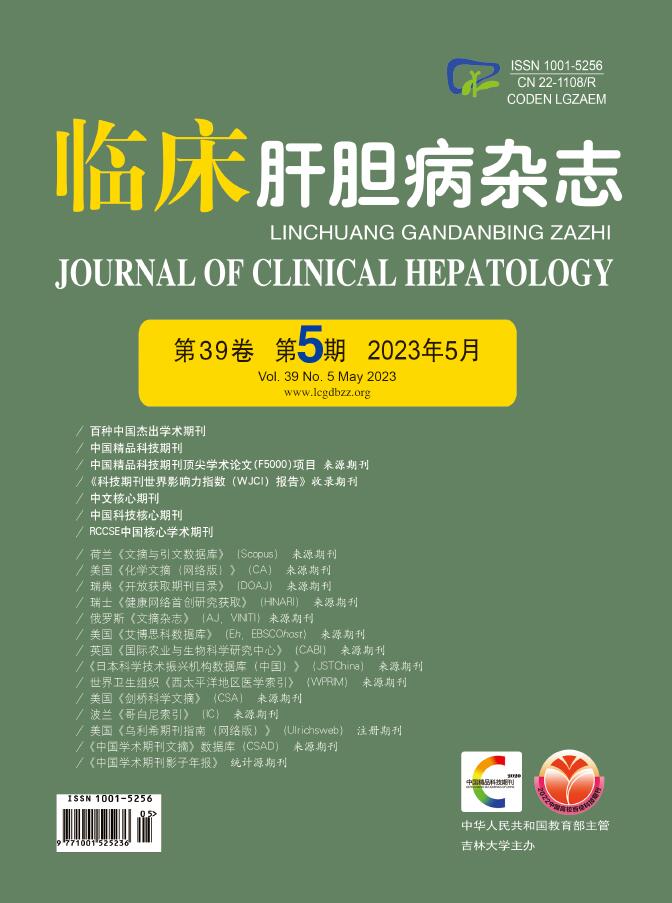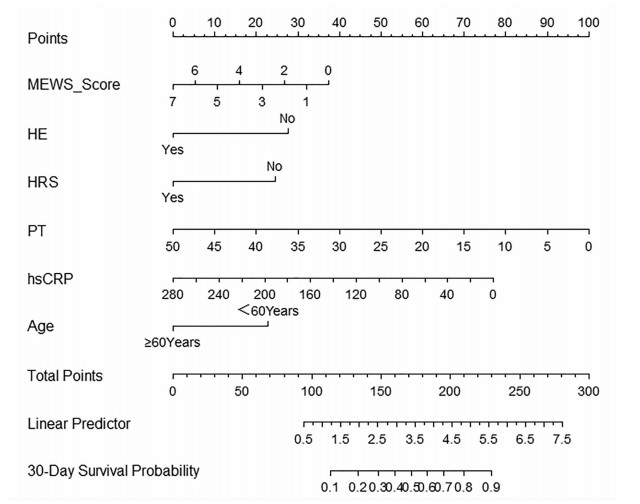| [1] |
DELLINGER RP, LEVY MM, SCHORR CA, et al. 50 years of sepsis investigation/enlightenment among adults-the long and winding road[J]. Crit Care Med, 2021, 49(10): 1606-1625. DOI: 10.1097/CCM.0000000000005203. |
| [2] |
HUANG HK, CHEN HY, HSU YC. Comparing the prognosis of patient with alcohol and nonalcohol-associated cirrhosis with bacteremia[J]. Alcohol Alcohol, 2020, 55(5): 512-517. DOI: 10.1093/alcalc/agaa057. |
| [3] |
CHEN HY, HSU YC. Afebrile bacteremia in adult emergency department patients with liver cirrhosis: clinical characteristics and outcomes[J]. Sci Rep, 2020, 10(1): 7617. DOI: 10.1038/s41598-020-64644-7. |
| [4] |
CHATTERJEE S, KAWAHARA R, TJONDRO HC, et al. Serum N-glycomics stratifies bacteremic patients infected with different pathogens[J]. J Clin Med, 2021, 10(3): 516. DOI: 10.3390/jcm10030516. |
| [5] |
JOHNSON AL, RATNASEKERA IU, IRVINE KM, et al. Bacteraemia, sepsis and antibiotic resistance in Australian patients with cirrhosis: a population-based study[J]. BMJ Open Gastroenterol, 2021, 8(1): e000695. DOI: 10.1136/bmjgast-2021-000695. |
| [6] |
Chinese Society of Hepatology, Chinese Medical Association, Chinese Society of Infectious Diseases, Chinese Medical Association. Guidelines for the prevention and treatment of hepatitis C(2019 version)[J]. J Clin Hepatol, 2019, 35(12): 2670-2686. DOI: 10.3969/j.issn.1001-5256.2019.12.008. |
| [7] |
Chinese Society of Hepatology, Chinese Medical Association, Chinese Society of Infectious Diseases, Chinese Medical Association. The guideline of prevention and treatment for chronic hepatitis B(2010 version)[J]. J Clin Hepatol, 2011, 27(1): 113-128. http://lcgdbzz.org/article/id/LCGD201101035 |
| [8] |
Fatty Liver Expert Committee, Chinese Medical Doctor Association, National Workshop on Fatty Liver and Alcoholic Liver Disease, Chinese Society of Hepatology, Chinese Medical Association. Guidelines of prevention and treatment for alcoholic liver disease: a 2018 update[J]. J Clin Hepatol, 2018, 34(5): 939-946. DOI: 10.3969/j.issn.1001-5256.2018.05.006. |
| [9] |
National Workshop on Fatty Liver and AlcoholicLiver Disease, Chinese Society of Hepatology, Chinese Medical Association. Guidelines on the diagnosis and management ofprimary biliary cholangitis (2021)[J]. J Clin Hepatol, 2022, 38(1): 35-41. DOI: 10.3969/j.issn.1001-5256.2022.01.007 |
| [10] |
Chinese Society of Hepatology, Chinese Medical Association; Chinese Society of Gastroenterology, Chinese Medical Association; Chinese Society of Infectious Diseases, Chinese Medical Association. Consensus on the diagnosis and management of autoimmune hepatitis(2015)[J]. J Clin Hepatol, 2016, 32(1): 9-22. DOI: 10.3969/j.issn.1001-5256.2016.01.002. |
| [11] |
SINGER M, DEUTSCHMAN CS, SEYMOUR CW, et al. The Third International Consensus Definitions for Sepsis and Septic Shock (Sepsis-3)[J]. JAMA, 2016, 315(8): 801-810. DOI: 10.1001/jama.2016.0287. |
| [12] |
ZHENG RQ, ZHANG YF, RONG ZQ, et al. Surviving Sepsis Campaign: international guidelines for management of sepsis and septic shock 2021, interpretation and expectation[J]. Chin Critical Care Med, 2021, 33(10): 1159- 1164. DOI: 10.3760/cma.j.cn121430-20211009-01442. |
| [13] |
FLEISCHMANN-STRUZEK C, MIKOLAJETZ A, SCHWARZKOPF D, et al. Challenges in assessing the burden of sepsis and understanding the inequalities of sepsis outcomes between National Health Systems: secular trends in sepsis and infection incidence and mortality in Germany[J]. Intensive Care Med, 2018, 44(11): 1826-1835. DOI: 10.1007/s00134-018-5377-4. |
| [14] |
HASSAN EA, ABDEL REHIM AS, AHMED AO, et al. Clinical value of presepsin in comparison to hsCRP as a monitoring and early prognostic marker for sepsis in critically ill patients[J]. Medicina (Kaunas), 2019, 55(2): 36. DOI: 10.3390/medicina55020036. |
| [15] |
MILBRANDT EB, ELDADAH B, NAYFIELD S, et al. Toward an integrated research agenda for critical illness in aging[J]. Am J Respir Crit Care Med, 2010, 182(8): 995-1003. DOI: 10.1164/rccm.200904-0630CP. |
| [16] |
SCHMITT F, MANOLOV V, MORGENSTERN J, et al. Acute fibrinolysis shutdown occurs early in septic shock and is associated with increased morbidity and mortality: results of an observational pilot study[J]. Ann Intensive Care, 2019, 9(1): 19. DOI: 10.1186/s13613-019-0499-6. |
| [17] |
VAN VUGHT LA, UHEL F, DING C, et al. Consumptive coagulopathy is associated with a disturbed host response in patients with sepsis[J]. J Thromb Haemost, 2021, 19(4): 1049-1063. DOI: 10.1111/jth.15246. |
| [18] |
BATES SM. D-dimer assays in diagnosis and management of thrombotic and bleeding disorders[J]. Semin Thromb Hemost, 2012, 38(7): 673-682. DOI: 10.1055/s-0032-1326782. |
| [19] |
INNOCENTI F, GORI AM, GIUSTI B, et al. Prognostic value of sepsis-induced coagulation abnormalities: an early assessment in the emergency department[J]. Intern Emerg Med, 2019, 14(3): 459-466. DOI: 10.1007/s11739-018-1990-z. |
| [20] |
BAKKER J. Lost in translation: on lactate, hypotension, sepsis- induced tissue hypoperfusion, quantitative resuscitation and surviving sepsis campaign bundles[J]. Crit Care Med, 2015, 43(3): 705-706. DOI: 10.1097/CCM.0000000000000870. |
| [21] |
BOHRA A, WORLAND T, HUI S, et al. Prognostic significance of hepatic encephalopathy in patients with cirrhosis treated with current standards of care[J]. World J Gastroenterol, 2020, 26(18): 2221-2231. DOI: 10.3748/wjg.v26.i18.2221. |
| [22] |
KROUPINA K, BÉMEUR C, ROSE CF. Amino acids, ammonia, and hepatic encephalopathy[J]. Anal Biochem, 2022, 649: 114696. DOI: 10.1016/j.ab.2022.114696. |
| [23] |
TRANAH TH, BALLESTER MP, CARBONELL-ASINS JA, et al. Plasma ammonia levels predict hospitalisation with liver-related complications and mortality in clinically stable outpatients with cirrhosis[J]. J Hepatol, 2022, 77(6): 1554-1563. DOI: 10.1016/j.jhep.2022.07.014. |
| [24] |
ARORA V, MAIWALL R, RAJAN V, et al. Terlipressin is superior to noradrenaline in the management of acute kidney injury in acute on chronic liver failure[J]. Hepatology, 2020, 71(2): 600-610. DOI: 10.1002/hep.30208. |
| [25] |
FEBRES ALDANA C, POPPITI RJ. Cholangitis lenta causing bile cast nephropathy: A unique model of hepatorenal failure in sepsis[J]. Fetal Pediatr Pathol, 2018, 37(6): 424-432. DOI: 10.1080/15513815.2018.1520945. |
| [26] |
GINÈS P, FERNÁNDEZ J, DURAND F, et al. Management of critically-ill cirrhotic patients[J]. J Hepatol, 2012, 56 (Suppl 1): S13-24. DOI: 10.1093/ckj/sfac025. |
| [27] |
BARLOW B, PONNALURI S, BARLOW A, et al. Targeting the gut microbiome in the management of sepsis-associated encephalopathy[J]. Front Neurol, 2022, 13: 999035. DOI: 10.3389/fneur.2022.999035. |
| [28] |
ALI WA, BAZAN NS, ELBERRY AA, et al. A randomized trial to compare procalcitonin and C-reactive protein in assessing severity of sepsis and in guiding antibacterial therapy in Egyptian critically ill patients[J]. Ir J Med Sci, 2021, 190(4): 1487-1495. DOI: 10.1007/s11845-020-02494-y. |
| [29] |
GREALISH M, CHIEW AL, VARNDELL W, Depczynski B. The relationship between admission glucose and lactate with critical illness amongst adult patients presenting to the emergency department[J]. Acta Diabetol, 2021, 58(10): 1343-1349. DOI: 10.1007/s00592-021-01725-7. |
| [30] |
GÖK R, GÖK A, BULUT M. Assessing prognosis with modified early warning score, rapid emergency medicine score and worthing physiological scoring system in patients admitted to intensive care unit from emergency department[J]. Int Emerg Nurs, 2019, 43: 9-14. DOI: 10.1016/j.ienj.2018.06.002. |
| [31] |
TANG R, SHI LP, WEI YY, et al. Correlation analysis of MEWS, length of stay in lCU and death of patients who were unplanned transferred to lCU before transfer[J]. Nursing Prac Res, 2022, 19(2): 179-183. DOI: 10.3969/j.issn.1672-9676.2022.02.005. |
| [32] |
KHAN A, SARMA D, GOWDA C, et al. The Role of Modified Early Warning Score (MEWS) in the prognosis of acute pancreatitis[J]. Oman Med J, 2021, 36(3): e272. DOI: 10.5001/omj.2021.72. |









 本站查看
本站查看





 DownLoad:
DownLoad:
